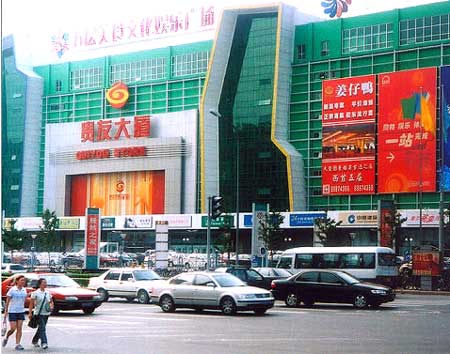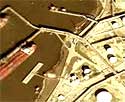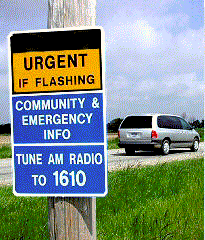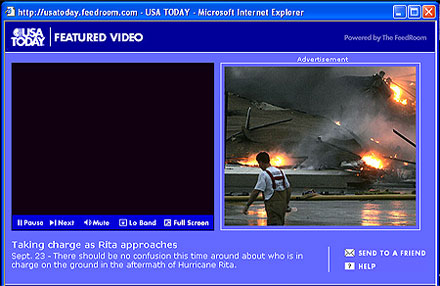Beijing Hypermarket: Golden Resources Mall
In part 1 of this 3 part series, China, a capitalist giant awakened our correspondents Carole To in Beijing and Europe Desk Editor Nidhi Kaushik in London have prepared this report on Golden Resources Mall.
Does size matter? Does the size of a new mall matter or is their success based on how well they serve a community.

In a world where shopping seems to be one of our favourite past times, welcome to the world’s largest mall – visible from space - and as impressive as “The Great Wall Of China”. Embracing the multi-level look rather than the sprawling two level style common in the U.S., China’s biggest mall – Golden Resources Mall also known as Jin Yuan in Beijing spreads over a whopping six million square feet. The five story building has 90 flagship (anchor) stores, 200 escalators and 1,600 retailers, selling a plethora of products ranging from FMCGs to entertainment, it is a shopper’s paradise. As the name suggests, this mall has brought the best resources from all over the world together under one gigantic roof. Be it Victorian style furniture, American bathrooms and DVD stores or children’s playgrounds and restaurant cuisines such as Korean, Italian, Chinese or French, there is something here to suit everyone’s palette.
Completed ten months ago, Golden Resources Mall is the work of Huang Rulun, a real-estate entrepreneur from the coastal factory-belt province of Fujian, he figures somewhere in the middle of China's top 100 richest people. A mall this size not only commands wonder from the consuming public but also draws the attention of critics who look at the economics as a possible sign of an overly aggressive economy; they wonder whether the world’s biggest mall will perhaps face an even bigger failure in the future. Additionally, rivalries with other firms continue to encourage Chinese developers to build ever bigger and better malls. Of the 10 largest shopping malls in the world, five are in China. But it doesn't stop there, Fu YueHong, General Manager of Golden Resources Mall claims that this giant mall is the best among the existing malls. She says, “Shopping malls from inner China, are still in between the shopping mall and grocery store stage“. Though, this mall will be facing enormous market challenges from Tianhe Cheng Mall and two projects currently in development: South China Mall and Triple Five Wenzhou Mall - which will be even larger - and shoppers are pouring more money into the mega centers China's state-controlled banks are not.
According to Fu YueHong, “The standard of living in China has improved a lot. Chinese consumers prefer to spend their disposable income on franchised products. Therefore they have over 400 franchises in the mall.” She also says that, “Chinese have more leisure time, which they have addressed by way of providing various leisure activities such as movie theatres, restaurants, gymnasiums and badminton courts.”
Developers are confident that these "hypermarket" centers are what the consumers are demanding. Others feel that their survival is based upon repeat customers. Hypermalls do offer a large assortment of merchandise and a shopping experience that draws in families, friends and people of all ages however, unfortunately, they may also appear as a dizzying labyrinth of shops services, congested atmosphere and inconvenient parking. Fu YueHong says that they have addressed the problem of inconvenient parking by making “10,000 free parking places, outdoor and indoor, underneath and above, “ still one customer says, “They should build some playgrounds for kids, put some in trees and add a tunnel so that the cars could park like in Carrefour.”
A mall, the size of a small city may not bring customers back if they feel confused and frustrated. Looking from the retailer’s perspective - based on the principle of cumulative attraction, a large shopping mall attracts not only the big brands but also a great many potential customers. Building a mall that is too large or poorly laid out may turn consumers away rather than attract and ultimately prove devastating for the surrounding community.
By Carole To - Beijing
and Nidhi Kaushik - London
Greener Magazine
Next week Part 2: An interview with Golden Resources Mall Manager, Fu Yue Hong



1:42 PM









 "The idea is to show the public that renewable energy systems are available now, work and can be economical..albeit in the long term," stated Christian Grieco, a local NESEA coordinator for the event. "Our attitude is you have to pay for energy anyway-why not invest in the future and buy a system that produces electricity, passive heating or cooling, or hot water. The 'fuel' is free and the savings on the utility bill allow the system to pay for itself over time," he explained. "And we get cleaner air to boot."
"The idea is to show the public that renewable energy systems are available now, work and can be economical..albeit in the long term," stated Christian Grieco, a local NESEA coordinator for the event. "Our attitude is you have to pay for energy anyway-why not invest in the future and buy a system that produces electricity, passive heating or cooling, or hot water. The 'fuel' is free and the savings on the utility bill allow the system to pay for itself over time," he explained. "And we get cleaner air to boot."






